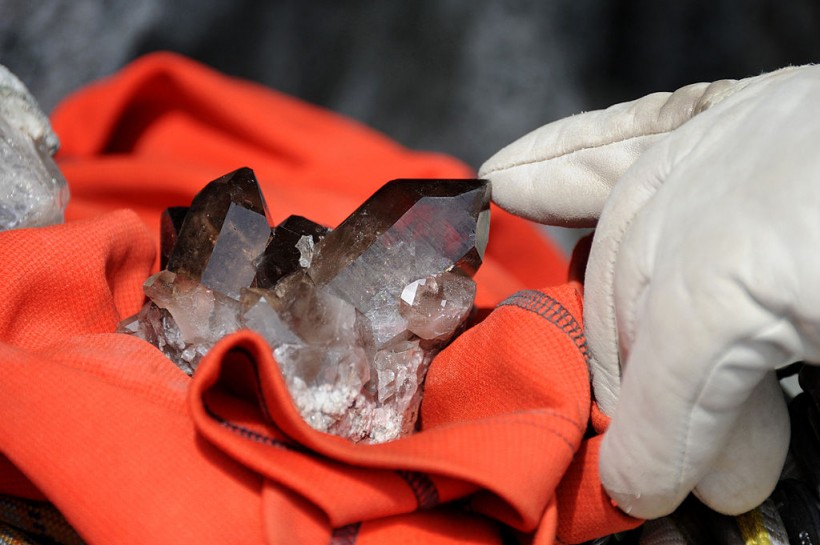Archaeologists from the University of Manchester uncovered several rock crystals at a massive Neolithic structure (6,000 BC to 3,000 BC) in Dorstone Hill, England.
To designate burial locations, the crystals were taken to the area and methodically "knapped" before being placed in the Neolithic burial site.
The complex, which experts unearthed between 2011 and 2019, consists of a causewayed enclosure, three long mounds, and three timer halls.
According to ZME Science, researchers found several artifacts, including pottery and stone tools. They cremated human remains, in addition to rock crystal, a giant six-sided crystal that is a pure, clear version of quartz. The quartz is by far the site's most impressive discovery.
Only a few studies have examined how people used the material and its possible relevance. However, researchers found evidence of the usage of rock crystals at other prehistoric sites in the United Kingdom.
The University of Manchester team has proposed that the crystals be purposefully placed into the burial mounds.
Researchers published their work in the Cambridge Archaeological Journal last month.
A Closer Look At The Crystals
The rock crystals appear to have been carefully broken into much smaller pieces, perhaps during a community gathering to witness the working of what must have seemed to be a magical substance, after having been transported to the site from a source more than 80 miles (130 kilometers) away over mountainous terrain.
The said paper, of which Nick Overton - an archaeologist at The University of Manchester in England - is the principal author, reveals the finding of approximately 300 of these quartz crystal shards at a 6,000-year-old ceremonial site at Dorstone Hill in western England, roughly a mile (1.6 kilometers) south of Arthur's Stone.
Absolutely delighted that our new paper on #Neolithic Rock Crystal from Dorstone Hill is now out #OpenAccess in Cambridge Archaeological Journal #Archaeology #Prehistory https://t.co/jZ6IznoUkz @RoviraGarcia @julesbirch72 @UoMCAHAE @UoMArchaeology @CUHistArchRel 🧵1/9 pic.twitter.com/HylnecgNFL
— Nick Overton (@ArchaeOverton) August 10, 2022
Overton told Live Science that the indigenous people seem to emphasize the practice of working with the crystal.
Because of this, the rock quartz hasn't been transformed into tools like the other chipped stone discovered at the location.

Alexandre Pitti, mountaineer,, and crystal hunter, shows a piece of quartz on September 11, 2013, found in a cavity of La Dent du Geant (The Giant's Tooth), a mountain in the Mont Blanc massif. In Chamonix, they are about fifteen crystal hunters who diligently practice this ancestral activity.
ALSO READ: Archeology Team Unearthed 2000-Year-Old Remains at the Iron Age Site Duropolis in Dorset
Crystals to Mark Burial Sites
The so-called "halls of the dead" atop Dorstone Hill are two enormous ceremonial grave mounds that indigenous people probably built to commemorate the local community and leaders on a large scale. They were found initially over ten years ago.
And it is one explanation for why experts found so much rock crystal there. People could have used the crystals in rituals, according to IFL Science.
The researchers think that dealing with this material would have resulted in essential events due to the peculiar and exotic nature of rock crystal at Dorstone Hill.
Researchers claim that the technical and distribution data show that these activities were carried out precisely, with deposition occurring nearly invariably in mortuary contexts and near the deceased's cremated remains.
The team's next goal is to examine materials recovered in other UK locations in order to determine whether people were using this stuff in different contexts and identify connections and regional customs. To determine if they can identify the crystal's precise source, they also want to examine the chemical makeup of the crystal.
RELATED ARTICLE: Chinese Trove Recently Unearthed in Sanxingdui Site Offers a Glimpse of Ancient Kingdom's Mysterious Side
Check out more news and information on Archaeology in Science Times.














